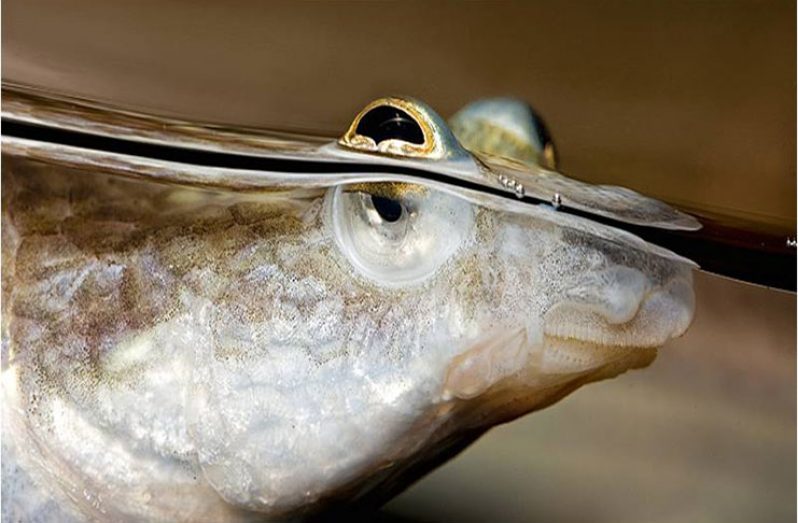By James Sydney
ONE OF THE interesting things about the water near the Atlantic in Guyana is a fish with large bulbous eyes. Everybody calls them “four-eye.” They attract attention as they swim in  large numbers near the surface of the water because they are so obviously oddities of the fish world. But do they really have four eyes?
large numbers near the surface of the water because they are so obviously oddities of the fish world. But do they really have four eyes?
The short answer is yes. Four-eyed fish do really have four eyes. Those protruding eyes at the top of their heads stick part in and part out of water allowing them to see four images, two above and two under water.
The eyes are divided into aerial (above water) and aquatic (under water) parts. Lenses are egg-shaped, rather than round. When the fish looks at objects under the water, light passes through the full length of the lens, making the four-eyed fish just as nearsighted as other fish. When it looks above water into the air, light rays pass through the shorter width of the lens, allowing the fish to see farther away and to spot predators lurking above the water.
Four-eyed fish live in South and Central America in the brackish waters of the estuaries of rivers, and in shallow, muddy streams and on the Atlantic Coast. Its scientific name is Anableps anableps. In Trinidad, as in Guyana, it is called Four-eye, but also Stargazer.
It has a long, cylindrical body, and a flat head from which the eyes protrude. The back, which is flat, has been described as “olive to gray” and the flanks “gray-yellow to white with a violet to white iridescence under some lights.” Four eyes might reach 12 inches in length.
The fish move in schools, feeding on insects and other small creatures living on the mud, and also on other small fishes. They can remain on mud bottom exposed to air during low tide. They can also be seen vigorously jumping about on the mud flats.
The four eyes are not the only unusual things about this fish. Four-eyed fish bear their young live. There are no fish eggs to get from them. In fact, they were the first species of live bearing fish discovered.
Male four-eyed fish also have a gonopodium, which is an anal fin modified to serve as a sex organ used in the transferal of sperm to female. The gonopodium of males is twisted either to the right or left. The genital opening of the female is also right or left. Because of this, right-sided males can only mate with left-sided females, and vice versa.
As we can see, there’s a lot more to four-eyed fish than four eyes.




.jpg)










